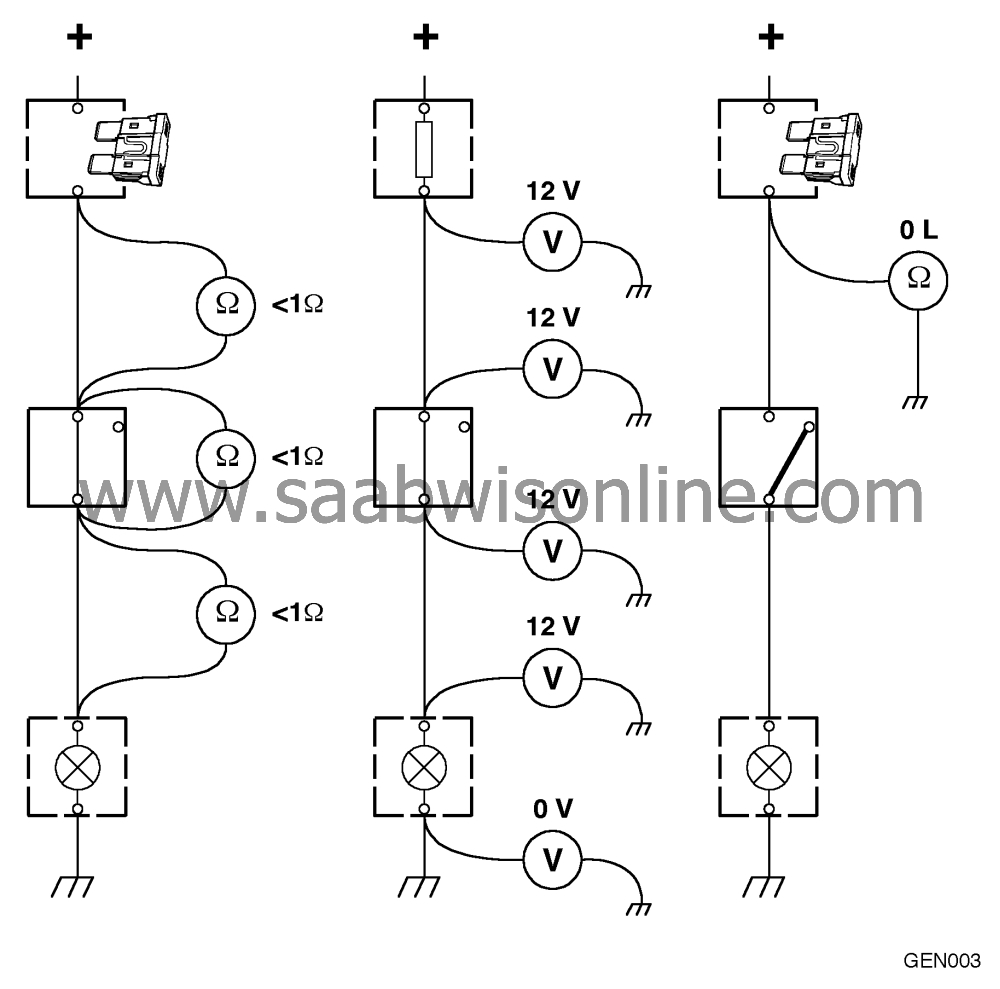Checking for open-circuits/short-circuits
|
|
Checking for open-circuits/short-circuits
|
Open circuit (resistance measurement)
|
1.
|
Make sure that the component
or lead to be checked is not live.
|
|
2.
|
With the instrument set for reading resistance, connect the test leads to each
end of the component or lead that is to be checked.The resistance of wiring harnesses should
normally be less than 1 ohm. The resistance of components should be that specified for them.
|
Open circuit (Voltage measurement)
|
1.
|
Connect the load, if any.
|
|
2.
|
With the instrument set for reading voltage, connect the black test lead to a good
ground and the red test lead to the wiring.
|
|
3.
|
Take readings on the output side of the control module or switch and gradually
move along the circuit towards the load. When the voltage reading disappears you will have
just passed the break in the circuit (open circuit).
|
|
4.
|
Take readings at the current source output and gradually move along the circuit
towards the input side of the control module or item of electrical equipment (load). When the
voltage reading disappears you will have just passed the break in the circuit (open circuit).
|
Short circuit to ground (Resistance measurement)
|
1.
|
Make sure that the lead to be
checked is not live and that any load is disconnected.
|
|
2.
|
With the instrument set for reading resistance, connect one test lead to the load
side of the wiring and the other test lead to a good ground.
|
|
3.
|
Carefully jiggle the wiring while observing the instrument, which should show
infinite resistance (OL) the whole time.
|



